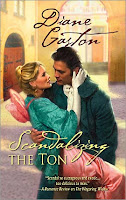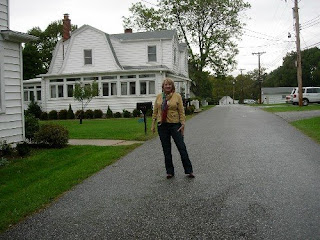The Winner of Scandalizing the Ton is………..
Arkiern !
Congratulations, Arkiern.
 Send us an email by Oct 20 at riskies@yahoo.com with your name and address and your signed copy of Scandalizing the Ton will be on its way!
Send us an email by Oct 20 at riskies@yahoo.com with your name and address and your signed copy of Scandalizing the Ton will be on its way!
The Winner of Scandalizing the Ton is………..
Arkiern !
Congratulations, Arkiern.
 Send us an email by Oct 20 at riskies@yahoo.com with your name and address and your signed copy of Scandalizing the Ton will be on its way!
Send us an email by Oct 20 at riskies@yahoo.com with your name and address and your signed copy of Scandalizing the Ton will be on its way!
 It is Columbus Day, a federal holiday here, but one lots of employers trade for the day after Thanksgiving.
It is Columbus Day, a federal holiday here, but one lots of employers trade for the day after Thanksgiving.
Did you know that Christopher Columbus asked King Henry VII of England for the money to fund his search for a shorter route to the Far East? King Henry said no.
He also was the first to bring cocoa beans to Europe, only he didn’t really appreciate this finding.After he robbed the cargo of a Mayan trader, he made this comment:
“They seemed to hold these almonds (the cocoa beans) at a great price; for when they were brought on board ship together with their goods, I observed that when any of these almonds fell, they all stooped to pick it up, as if an eye had fallen”
We, of course, understand that extreme need for chocolate.
Take this Christopher Columbus multiple choice quiz
My favorite:
Why were his crew extremely nervous?
A. Columbus had a drinking problem so he was a bit odd at times
(Did I tell you this quiz was intended for children?)
But Columbus has not much to do with the Regency…
So, I thought you might be interested in the legalities that formed the basis of Scandalizing the Ton. These came from Nancy Mayer of the Beau Monde Chapter of RWA, who helped with this part of the story.
 It has to do with a posthumous child, the unborn child of a deceased earl, in this case.
It has to do with a posthumous child, the unborn child of a deceased earl, in this case.
The title and inheritance cannot pass until ten months after the father’s death so that, should the man be married, his wife has time to produce the baby. If this baby is a boy he will inherit.
The wife was not allowed to say whether or not she had intercourse; the paternity of the child could only be contested if it could be proved the wife had not been in proximity of her husband. In Scandalizing the Ton, I had to be sure that Lydia’s deceased husband had been with her within a month of her encounter with Adrian. (The time sequence of Scandalizing was another thing that took some careful thinking)
Here’s a real kicker. If a widow marries again and bears a child within the ten months, she can decide whose child it is; that is, she can say it is her deceased husband’s child or her new husband’s child. The child is the legal child of whichever husband she selects.
Of course, this is not true today, but there weren’t any paternity tests in the Regency.
And speaking of Scandalizing the Ton (do I talk about anything else these days?), our sometimes commenter here, the lovely Mallory Pickerloy, went on a search for Scandalizing the Ton at her local Wallmart and she took photos.
Here’s the display of Harlequin Historicals
And here is a photo of a whole shelf. Can you see Scandalizing the Ton in there? (this is a little like Where’s Waldo?)
Here’s the photo of the whole book department there, which is a large one.
Thank you, Mallory! I am very tickled that you took the photos!!
Any other Scandalizing the Ton sightings?
Thanks to everyone who visited me yesterday. I’ll announce a winner a little later today.
(I’m also blogging about sprucing up your Golden Heart entry at Wet Noodle Posse today)
 When I’m writing a Regency, I like to try to be as authentic as I can be, so I do a lot of examining period house floor plans, looking at lots of photographs, thinking about carpets (see the comments on Andrea’s blog yesterday!). I almost always have a “real” house in mind for my characters, and I almost always try to set that house in a real place.
When I’m writing a Regency, I like to try to be as authentic as I can be, so I do a lot of examining period house floor plans, looking at lots of photographs, thinking about carpets (see the comments on Andrea’s blog yesterday!). I almost always have a “real” house in mind for my characters, and I almost always try to set that house in a real place.
Much of Scandalizing the Ton takes place in Mayfair, so I did a lot of looking at maps of the area, trying to make certain I put Lydia’s house in a “real” part of Mayfair. When I wrote the first draft, the opening scene took place behind Lydia’s townhouse, in the mews. Note the cover. You can see the door of a stable in the background.
After I sent in the first draft of the manuscript, my editor, Linda Fildew (pictured on Amanda’s blog last Saturday), said one of the other editors walked through Mayfair at the location I’d given Lydia’s townhouse and there were no mews there. On the corner, however, there was a fence with a gate into the garden. So if you read the first scene , you’ll notice that Lydia and Adrian meet on the pavement and go through the gate to the garden. The cover had already been designed by then.
 This wasn’t the end of my mapping woes, though. I received additional revisions. I thought I’d share a bit of how it went:
This wasn’t the end of my mapping woes, though. I received additional revisions. I thought I’d share a bit of how it went:
Linda: I’ve been poring over maps from the early 1800s and am struggling with the road layout. P1 Chesterfield Street appears to run south of Charles Street when the story has it running alongside Hill Street which is north of Charles.
From a modern map this road is called Chesterfield Hill, but can’t find this on the 1802 map of London’s streets that I’ve been looking at. Could I ask you to check this, please? You may have better recourse to maps than I do.
Diane: I’ve discovered the problem! On the modern map, the street that intersects with Hill Street is named Chesterfield Hill (Chesterfield in 1827 intersects with Curzon and Charles). In 1827 Chesterfield Hill was named John Street. I’ve made the changes.
Isn’t this the best? My editors walk Mayfair and pore over period maps!
The map I used for Scandalizing the Ton was Greenwood’s Map of London 1827 available online. Part of the Mayfair section of the map is shown above.
My question….Does it matter to you that the geography is right?
For more about the history of gossip and scandal that inspired Scandalizing the Ton, take a peek at my Behind the Scenes feature. For more of my mapping adventures check this Behind the Scenes.
I have a new contest on my website, several chances to win some of my backlist.
My oldest friend…er, I should say, my friend for the longest time...came into town and we took a little road trip in Maryland.
Barbara and I knew each other in high school in Alabama. We both lived in Ft. McClellan, then an army post. I showed you photos of my house there and talked about the trip we took to our (censored) year High School Reunion in 2006. That was Excellent Adventure, Part 2
But we also had Excellent Adventure, Part 1 in October of 2005, when my last Diane Perkins book was released.
This Excellent Adventure, Part 3 took Barbara and me to Baltimore and Annapolis where it mostly rained and we mostly wandered from restaurant to restaurant. Seriously, we had Maryland steamed crabs and I’ll bet very few of you did that over the weekend. Tie in to Risky Regencies — we saw the Baltimore Basilica, America’s first cathedral, built during the Regency. In Annapolis we stayed at the Robert Johnson House, now a historic inn but during the Regency, a private home.
In Baltimore we stopped by the Barnes & Noble at the Inner Harbor and found Scandalizing the Ton. Here’s proof!
The highlight of our trip, however, was our first stop at Edgewood Arsenal, an army post where both Barbara and I lived twice, but never at the exact same time. In those days it was called Army Chemical Center but they changed the name when “Chemical Center” became politically incorrect-or so I suppose.
 Army Chemical Center was a beautiful post on the banks of the Gunpowder River. It was a wonderful place to be a kid, with no end of things to do. We could walk to the library, the movie theatre, could ride bikes to the swimming pool and around the post along the river. We played tennis in the evenings, practically in our back yard.
Army Chemical Center was a beautiful post on the banks of the Gunpowder River. It was a wonderful place to be a kid, with no end of things to do. We could walk to the library, the movie theatre, could ride bikes to the swimming pool and around the post along the river. We played tennis in the evenings, practically in our back yard.
 I lived in an old farmhouse with bricks dating back to the 1700s (tie in to Risky Regencies…this house existed during the Regency) There’s an historic sign outside it that says Presbury Preaching House. Barbara lived in a house on the river very nearby.
I lived in an old farmhouse with bricks dating back to the 1700s (tie in to Risky Regencies…this house existed during the Regency) There’s an historic sign outside it that says Presbury Preaching House. Barbara lived in a house on the river very nearby.
My house (and me):I found this online and it must refer to the family that owned my house.
Early Methodist usually built a preaching house and school on the same grounds. Private homes were also used to hold meetings. Such meetings were held at the home of James Presbury, father of Joseph Presbury. Joseph Presbury donated land for the Old Brick Church of Gunpowder Neck, December 23, 1772, where the earliest written record of a quarterly conference is still available.
Barbara’s house (and Barbara):
 The heartbreaking part of this is that my old historic house is a shambles, the wood unpainted, the porch and the grounds full of clutter. At some point it had been turned into offices, but it was not in use now. There is scaffolding on one end so maybe there is some effort to restore it, but no one worked on it while we were there.
The heartbreaking part of this is that my old historic house is a shambles, the wood unpainted, the porch and the grounds full of clutter. At some point it had been turned into offices, but it was not in use now. There is scaffolding on one end so maybe there is some effort to restore it, but no one worked on it while we were there.
Even the residences in use, beautiful houses, probably build in the 1940s, like Barbara’s old house, had peeling paint in places.
The whole post was deteriorating, paint peeling, some buildings deserted, very little activity. It was very sad.
But we were ecstatic that we’d found where we’d lived.
Have you traveled back to your childhood homes? Or are you there still?
Have you had any Scandalizing the Ton sightings? The release date is Oct 1 so it should be showing up on the shelves.
I have a new contest on my website. Several chances to win books from my backlist.
And there’s still time to donate to Cystic Fibrosis for our Unleash the Story challenge.

The winner of Lost in You by Alix Rickloff is……..
CrystalGB!
Congratulations, CrystalGB. Email us at riskies@yahoo.com with your address and the faeries will deliver your book in person! (Well, through the post office, I mean)
